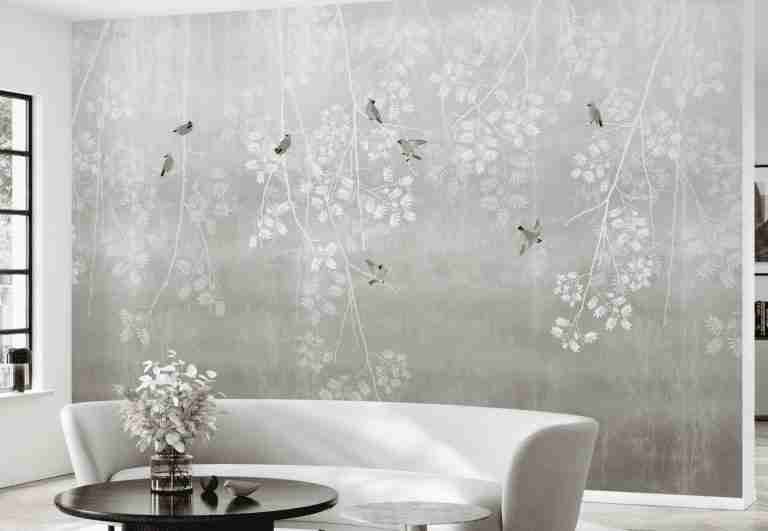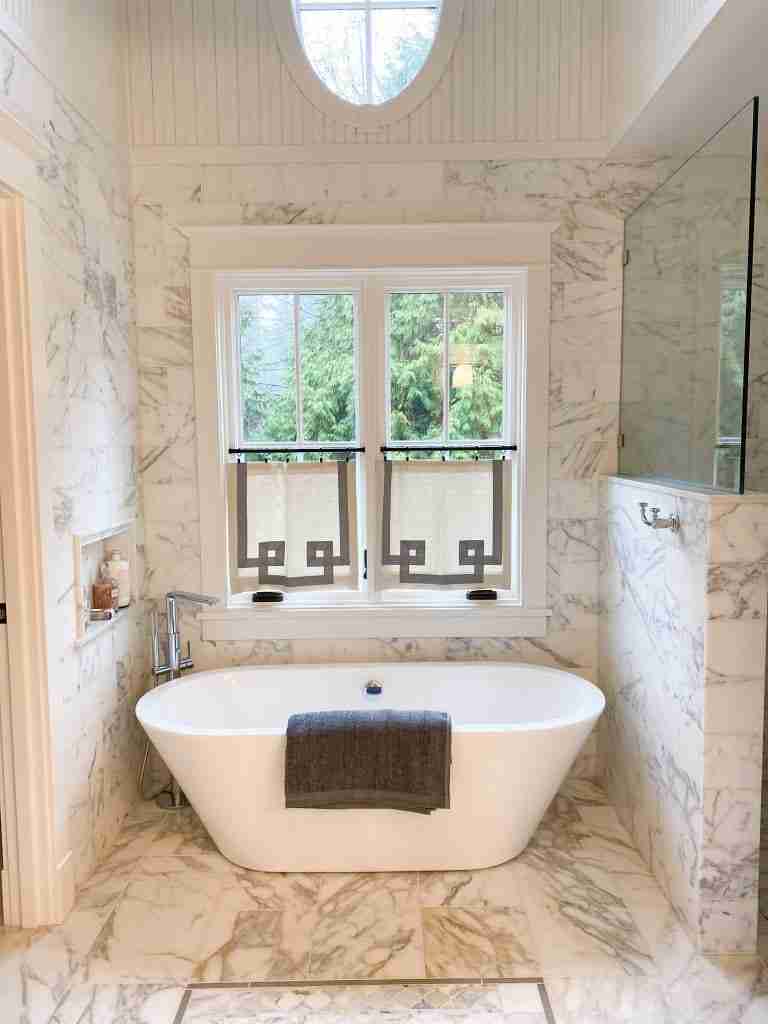15 Best Indoor Houseplants- Easy and Essential Home Decor
Houseplants are one of the best home decorating accents you can add to your home. Yes, you can buy really good faux plants but there is nothing like a beautiful real plant. Plants add a fresh, welcoming flair to your home decor. Houseplants purify the air, remove toxins all while providing stunning home decor throughout your home.
We are sharing the best 15 houseplants that are easy to care for, good for your health and add impact to your essential home decor. The proper light and water determines if your houseplants will thrive in your home.
Enrich Any Space With Plants
A tropical plant with exotic leaves has a way of enriching any space and makes you feel like you are living in a sanctuary. I don’t know about you but I love walking into a room filled with tropical houseplants. It makes me feel like I am on vacation. Studies suggest creating an outdoor garden oasis inside and outside provide many health benefits.
Many home decorators like to use large potted live trees to brighten entry ways, living rooms. The favorite houseplants are typically tropical plants and offer a timeless aesthetic. Small tree plants are versatile and can be arranged in any room in the house next to a window that offers natural light.
The best part of house plants is that they go with any decor and interior design styles. It’s really no different than designing your outdoor space with evergreen shrubs. Like boxwoods that can define your space.
Adding Houseplants To Your Home Decor Provides A Refuge
Houseplants to home decor provides a refuge from the insane outside world. Adding house plants to your home interior design is one of the popular home trends for 2022. Why? Because being home has never been more important than it is today. Homeowners are now prioritizes what feels good.
It has proven indoor plants increase creativity, diminish stress, and eliminate air pollutants and boost your mood.. Indoor plants don’t just look good—they can make us feel good.
A 2014 study published in the Journal of Experimental Psychology found that employees surrounded by plants are 15 percent more productive, and a 2015 study published in the Journal of Physiological Anthropology suggested indoor plants can lower psychological and physiological stress.
There are so many health benefits to growing indoor plants. House plants have proven to reduce fatigue and stress, improve indoor air quality and even improve your skin! Beautiful house plants make any home feel more luxurious.
We are recommending the best indoor plants that provide the most impact for your home decor. These plants will make your home feel like a sanctuary. You don’t even have to have a green thumb to take care of these popular low maintenance houseplants.
Houseplants Are Essential Pieces Of Your Home Decor
Think of house plants as essential pieces of your home decor. The only distinction is that house plants have light requirements. Take a look at each room in your house so you can determine which houseplants would thrive in that room. The light conditions and home temperatures play into how well your plant with thrive indoors.
Plants are a simple way to bring inspiration and vitality to your home space, whether it’s a room, home, balcony, patio, or yard (if you have one).
The Best Houseplants For Your Home Decor

1. Ficus Umbellata
This tropical houseplant is from Africa. This specific variety is known for their leaf shape and vibrant green colors. Ficus Umbellata is very similar to a Fiddle Leaf Fig Tree with it’s eye-catching, heart-shaped leaves. Grows into an upright tree.
Light: Ficus Umbrellata likes a bright indirect light. Place the ficus close to a window for natural bright light. This plant can handle some direct sunlight but not more than 4 hours of light.
Water: This plant loves to be drenched with water every couple of weeks rather than weekly watering. In the winter months, the water requirement is much less.

2. Ferns
Indoor Ferns are popular hardy house plants because they add a lush delicate addition to your home décor. There are many varieties of ferns that are vibrant, green and airy. Ferns offer a pretty cascading soft elegance that looks great in hanging baskets, mixed with other plants or in a simple indoor planter.
The other benefit to potting a fern in your home is that ferns are known removing toxins from the air. In fact, NASA included Boston ferns in their clean air study, confirming that it helped remove formaldehyde, xylene, and toluene from the air. The maidenhair fern is my favorite fern but is not an easy plant to care for.
Here are three popular indoor ferns that are a good choice
The Boston fern, also known as the sword fern,Grows to two feet or more. At first, erect, the fronds arch over with age, having continuous length of growth, unless injured.
a. Boston Fern:
Water: water frequently to prevent the soil from drying out. Dry soil is one of the number one reasons that Boston ferns die. Check the soil daily and make sure to give it some water if the soil feels at all dry.
Light: Boston ferns need a cool place with high humidity and indirect light. When you care for Boston fern plants indoors, it’s a good idea to provide additional humidity for them, especially in the winter. Too much shade can result in sparse fronds that aren’t their typical bright color. And too much sun can burn the fronds. So, both outdoors and indoors, make sure direct sunlight won’t hit your plant.

b. Lemon Button ferns, ( Nephrolepis cordifolia)
This fern is a small and delicate fern indigenous to Hawaii. It gets its name from a subtle lemon scent. This plant is a beautiful, low-maintenance option for anyone interested in adding a fern to their collection.
Water: Water is essential. All you have to do is make sure the soil is moist, not too wet and you are good to go.
Light: No direct sunlight. Place the plant in lower light areas of your home.
c. Blue Star Ferns (Phelbodium Aureum)
This gorgeous hardy fern is known for its large fronds. This fern is a very tolerant houseplant.
Water: Water this plant when the surface soil becomes completely dry.
Light: Low to medium lighting, no direct sunlight
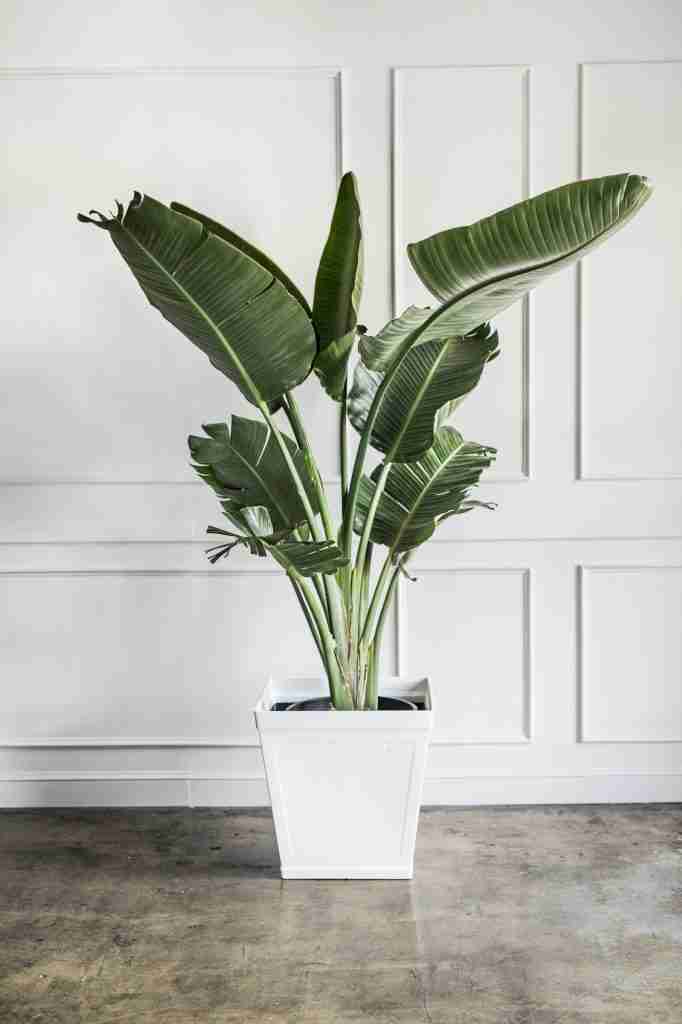
3. Banana Plant
Banana plants are striking! These trees are often grown outdoors in the summer. At the end of the summer some gardeners cut back the foliage, dig up the bulbs, and store them in a cool, dry spot in the basement or garage for the winter. If you have large windows that offer lots of light, you can grow an ornamental banana tree indoors year-round.
Light: This tropical plant loves full sun and warmth. It requires bright light so place this plant near a large sunny window.
Water: The banana plant needs to be watered often. The soil should be moist, never wet. The Banana plant needs good drainage. Too much water is not good for this beauty. If watered too much, it will cause root rot.
Banana plant houseplants require frequent feeding, especially during their active growth in warm weather. Therefore, you’ll want to give them a balanced soluble fertilizer each month. Apply this evenly throughout the container.
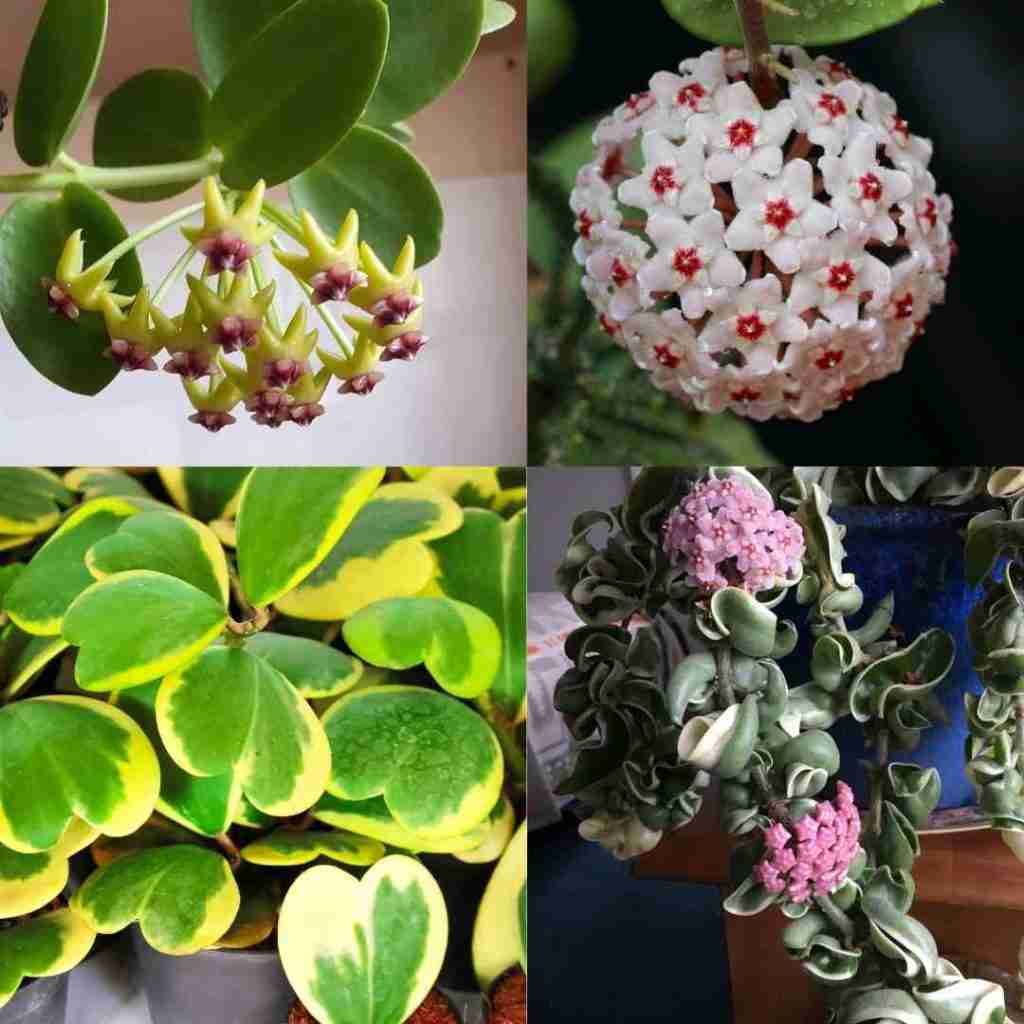
4. Hoya Plant
A hoya kerrii is a gorgeous trailing vine that blooms with clusters of fragrant sweet-smelling flowers in placed in the right place. The flowers look similar to a daphne bloom. The leaves are waxy and thick. The Hoya grows naturally in Asia and Australia are sturdy houseplants.
Light: Most hoya plants prefer indirect light.
Water: The Hoya plants grow well in a dryer soil. Let the soil dry out between waterings.
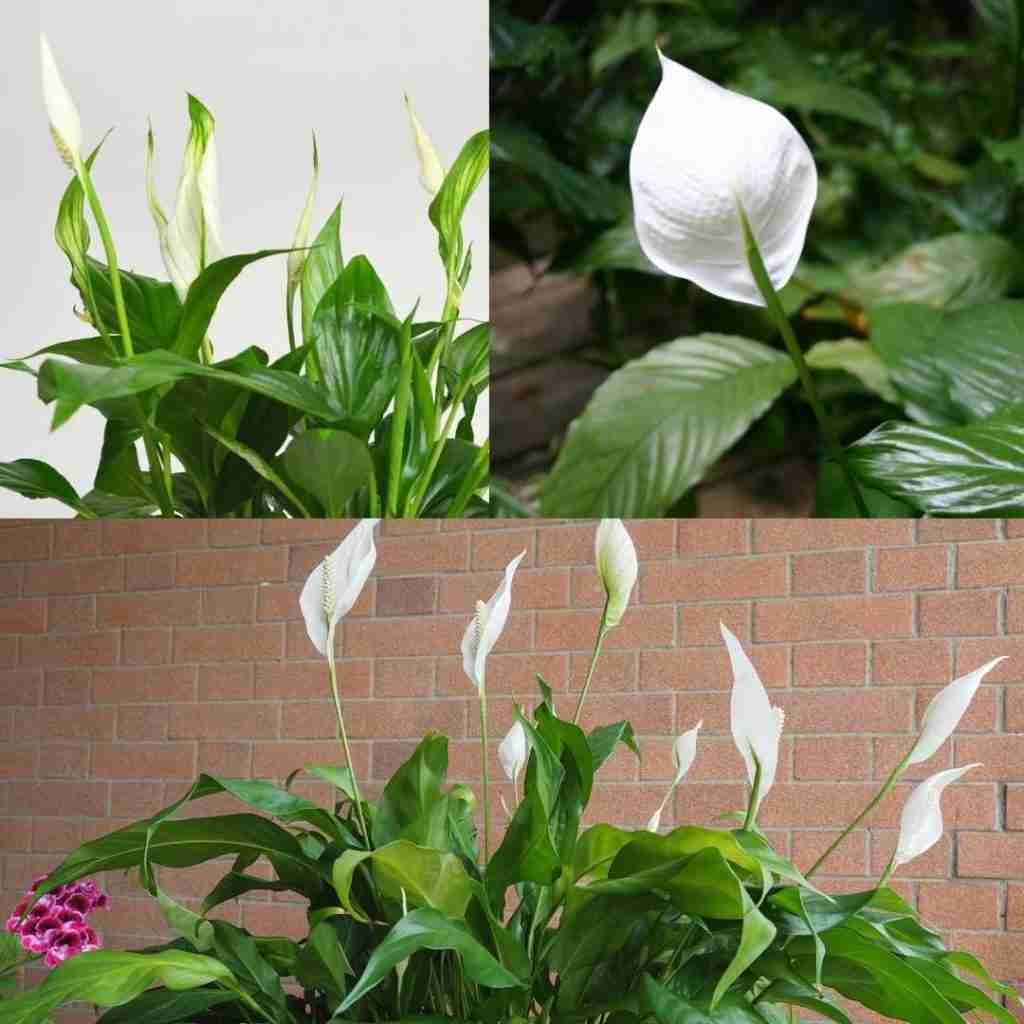
5. Peace Lily
The peace lily is a great indoor plant for good reason.It is another common tropical plant because they are easy to care for. If you have small children, you may consider not having this plant in your home unless it is out of reach of small children and pets.
Water: When it comes to watering, consistency is key. Keep the soil moist, but do not over water. This plant can tolerate short periods of dry soil, but their leaves will start to brown if neglected for too long.
Light: Keep these plants in a bright area but not in direct sunlight. They love warm temperatures in the upper 70 degrees if possible.
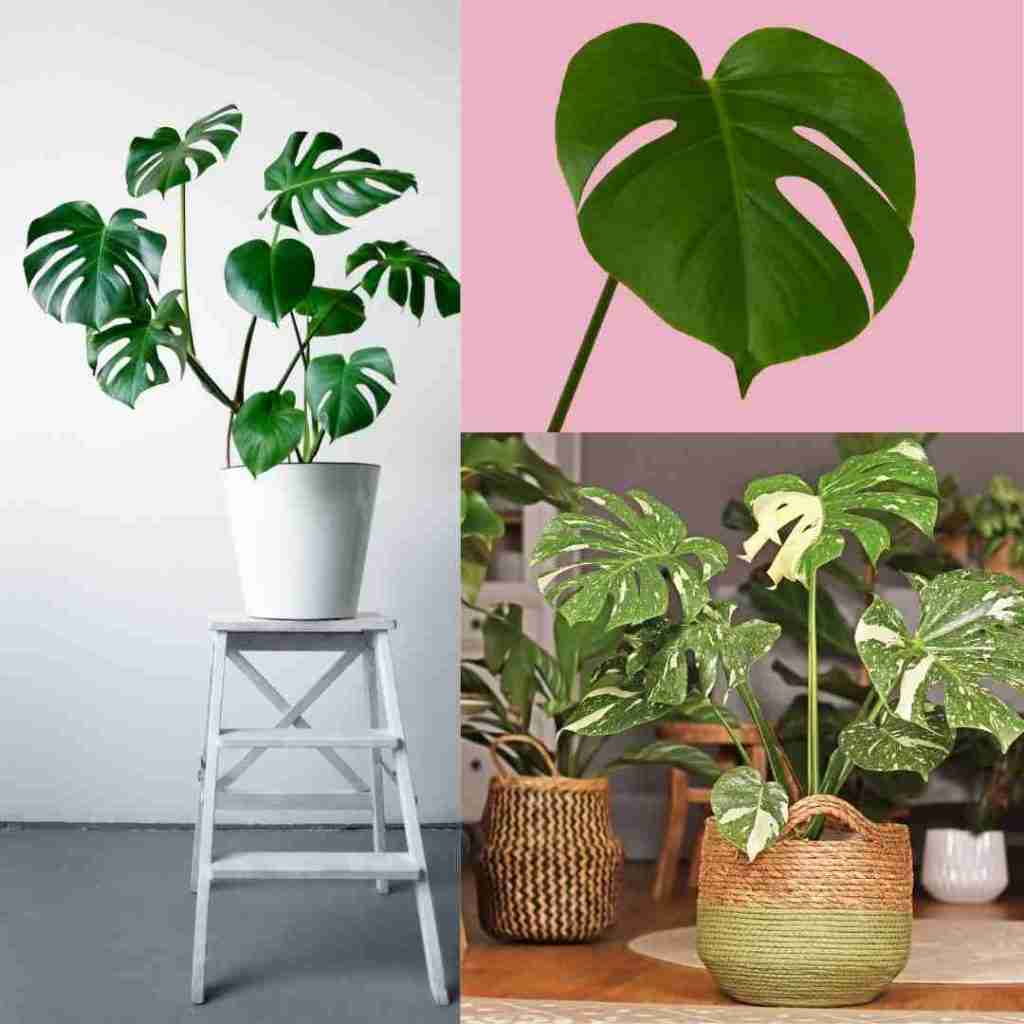
6. Monstera Deliciosa
This tropical low-maintenance plants are very easy to take care of. With huge, glossy, dark green leaves, Monstera deliciosa, also known by its common name “Swiss cheese plant,” is a striking addition to any room.
This beauty traditionally grows in the tropics of North and South America, where it can reach 70 feet tall. But it’s also a popular houseplant because it’s generally unfussy and has few pests or diseases. Its gorgeous large leaves make this houseplant so popular.
Water: This plant is happy when it sits in moist soil. When the soil is dry, it needs to be watered- pretty simple.
Light: The Monstera is a tropical plant so it prefers in bright, indirect sunlight.

7. The Orchid
Orchids have a reputation for being difficult to grow when in fact many varieties make excellent house plants. With proper care an orchid can be in bloom for months each year and can live indefinitely
Orchids are so elegant and a healthy well cared for orchid could produce continuous blooms. .
Water: Most orchids require water once a week. Avoid over watering as this can lead to root rot. Orchids do not like ‘wet feet’ but they do very much like humidity. As a result, when grown inside a home orchid are often placed on humidity trays. I usually take my orchids to my sink and drip water for a few minutes as the orchid drains completely before being placed back into growing space.
Light: Position your orchid in a bright windowsill facing east or west.
8. Pothos Plants
This pretty trailing plant is one of the most forgiving houseplants out there. I have had this plant, and it has to be one of the easiest house plants out there.
Water: For best results, water when the top inch or so of soil dries out.
Light: It can tolerate low and bright light, so you can put it just about anywhere in your home.
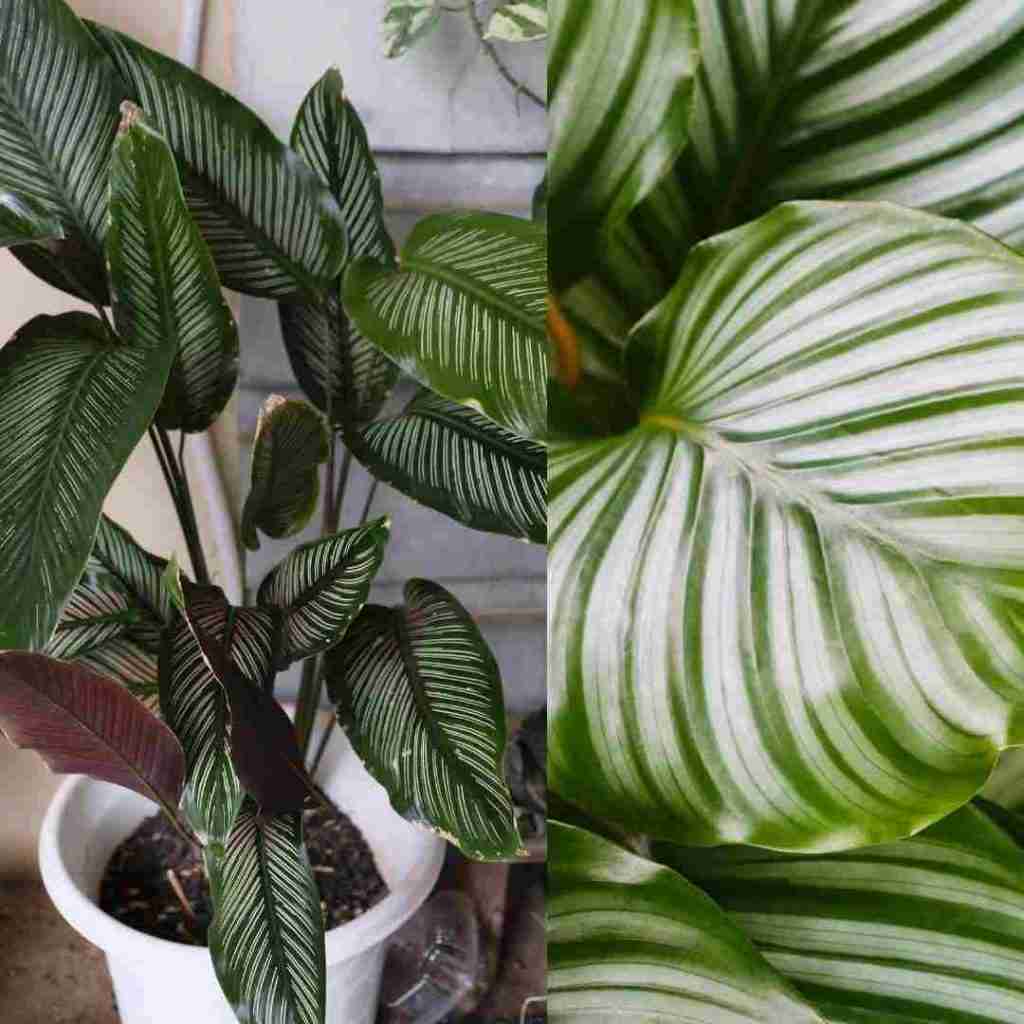
9. Calathea Freddie
This attractive tropical perennial member of the Arrowroot or Marantaceae (mar-uhn-tase-ay-e) family of plants is native to the rainforest floors of tropical South America, specifically Brazil’s northwestern regions.
Water: The Calathea leopardina should be watered when the top inch or so of soil is dried out.
Light: This plant will tolerate lower lighting conditions. They do best in bright, indirect sunlight such as a few feet away from an east or west-facing window.If the plant is grown in not high enough levels of light, then it will grow at a slower pace.
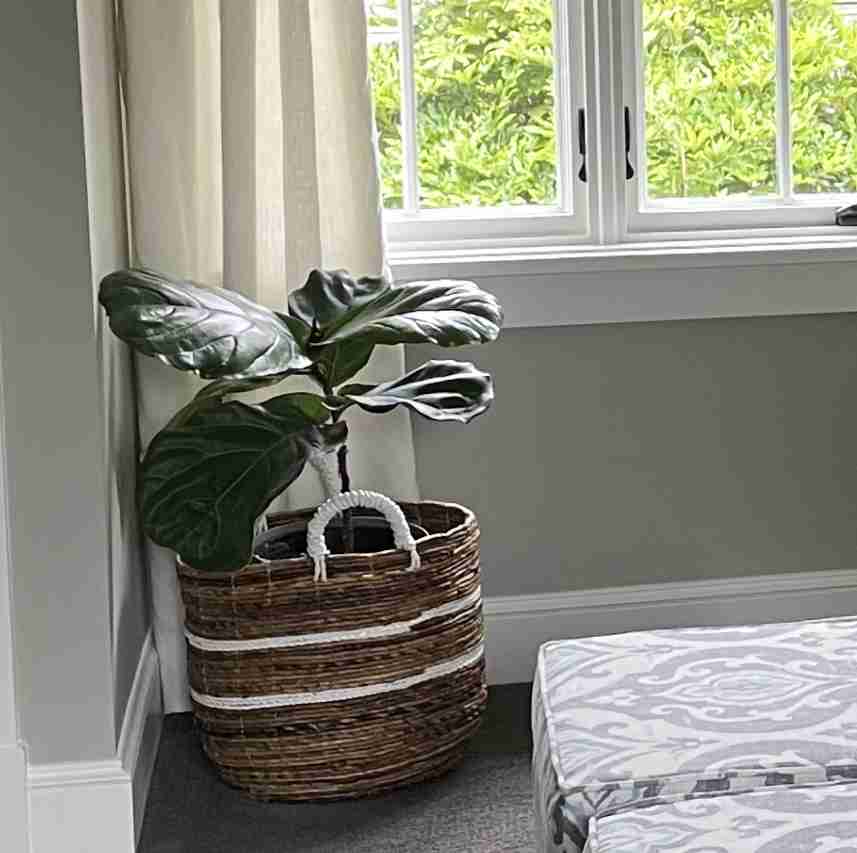
10. Fiddle Leaf Fig Plant
You often see faux fiddle leaf plants because the leaves are large and pretty. The fiddle-leaf fig is one of my favorite houseplants as the ideal focal point of a room if you can situate it in a floor-standing container where the plant is allowed to grow to at least 6-10 feet tall.
This plant is a great choice for a large entry way or great room with tall ceilings. The leaves are large and tropical. Please note it can be toxic to cats and dogs.
Water: Careful watering and warmer temperatures will help this gorgeous indoor plant thrive.Water when the top 50%-75% of the soil becomes dry, then thoroughly drench until the water drains into the saucer. Empty the saucer if the water level is high so as not to drown the roots.
As a native to the tropics, Fiddle Leaf Figs thrive in warm, wet conditions. Mist the leaves to increase humidity around your plant, especially in the drier winter months.
Light: They will need an area with brightly filtered light or an eastern facing window. We keep our fiddle leaf plants next to the window where there is no draft as they plant like humid and heat.
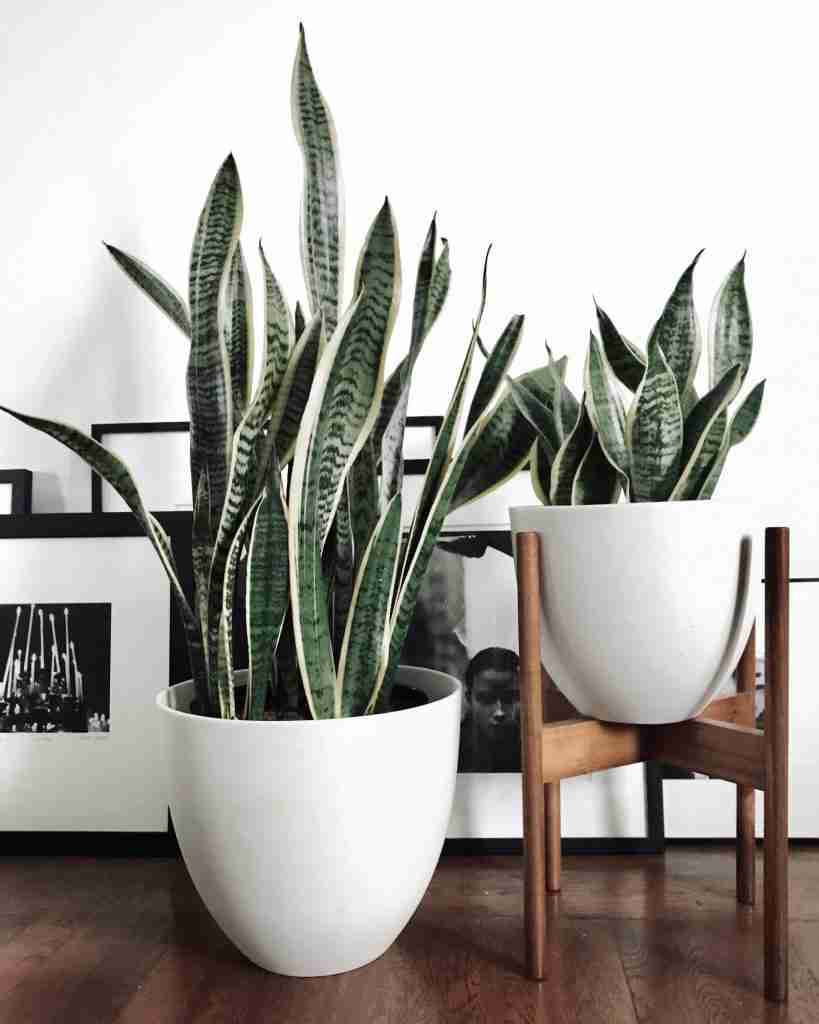
11. Snake Plant (Dracaena trifasciata)
The snake plant is one of the most tolerant plants there is which makes for a popular houseplant.
water: Snake plants tolerate drought better than all other dracaenas, but be careful not to overwater yours. Water only when the soil has dried completely and allow all excess moisture to drain.
Light: Avoid extremely low light or bright, direct light. Snake plants prefer bright, filtered light but will tolerate just about any type of indoor light.
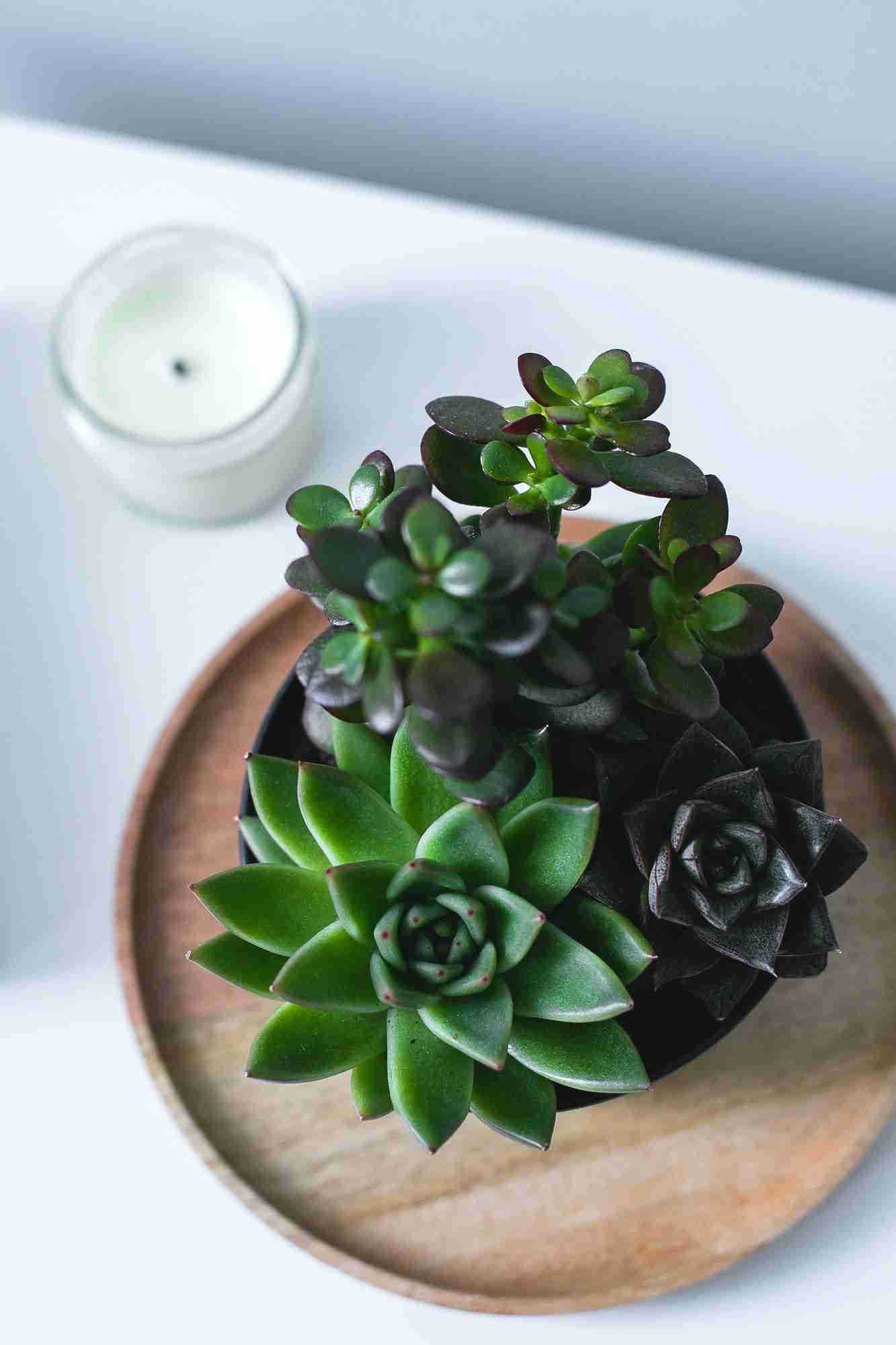
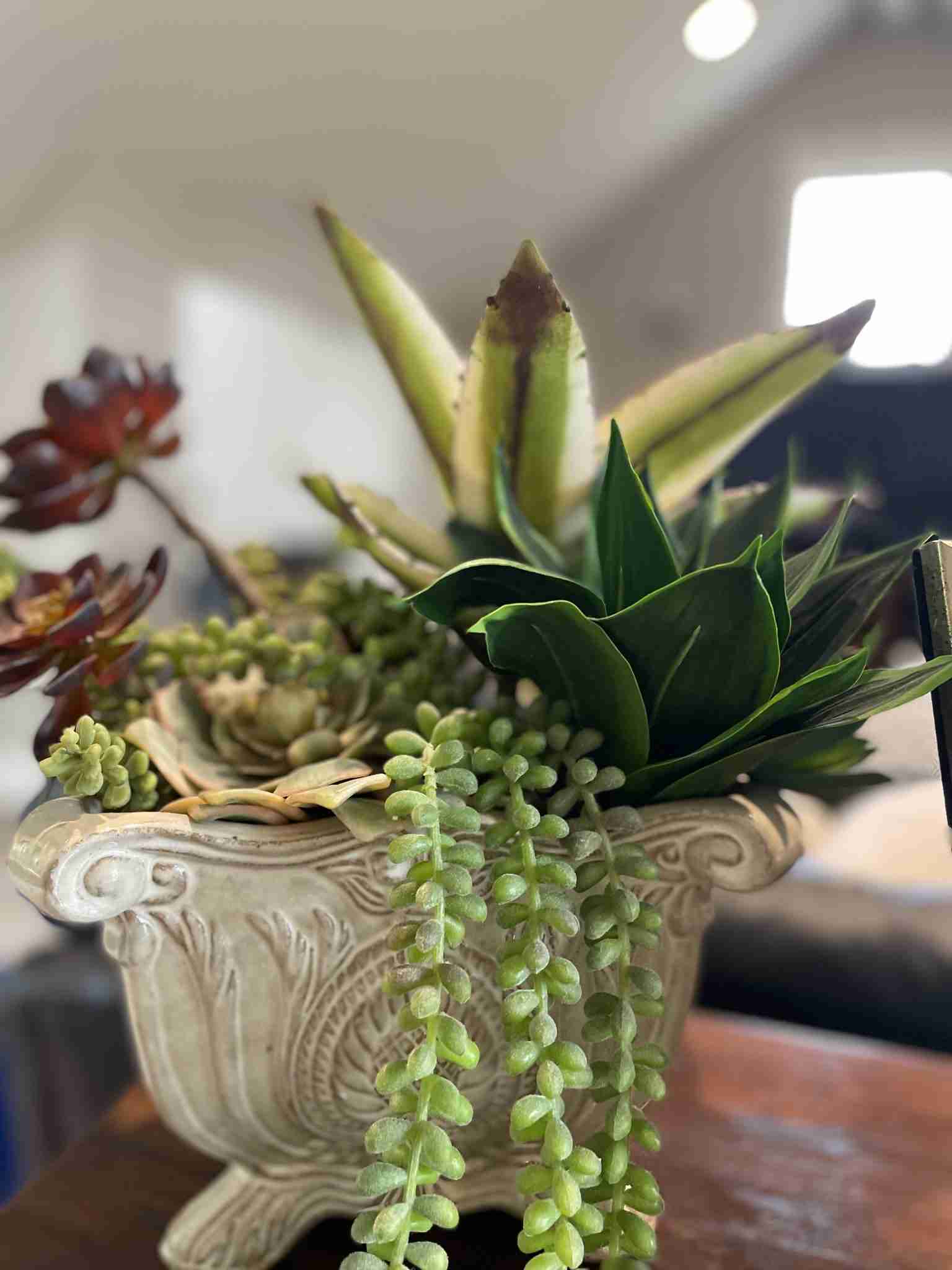
12. Succulents
Succulents are very popular for good reason. There are so many varieties so you can mix them together for interesting textured displays. These little guys store water in the tissue similar to a cactus. Succulents thrive in dry air and warm tempertaures, think desert like conditions.
They adapt well to life on the inside and are easy to find at garden centers and nurseries.Home depot always carries them as well.
Water: These sweet little babies do not need much water at all. Watch the soil, when it becomes dry add a little water.
Light: Succulents need light and need about six hours of sun per day, depending on the type of succulent. Newly planted succulents can scorch in direct sunlight, so gradually introduce them to full sun exposure or provide shade with a sheer curtain.

13. Indoor Palm Tree (Arecaceae)
Indoor palm trees do not only make you dream of a tropical vacation but they are fun to decorate with. Most palm trees are easy to grow and maintain because they adapt to their surroundings. I love palm trees of any size, they are so majestic.
This palm tree will grow into a large tree. Keep in mind that they grow slowly and it will take many years before you need to worry about space issues.
Water: Water this palm often to maintain moist soil.
Light: grow well with bright indirect sunlight throughout the year, but can still flourish in low-light or shady parts of your house.
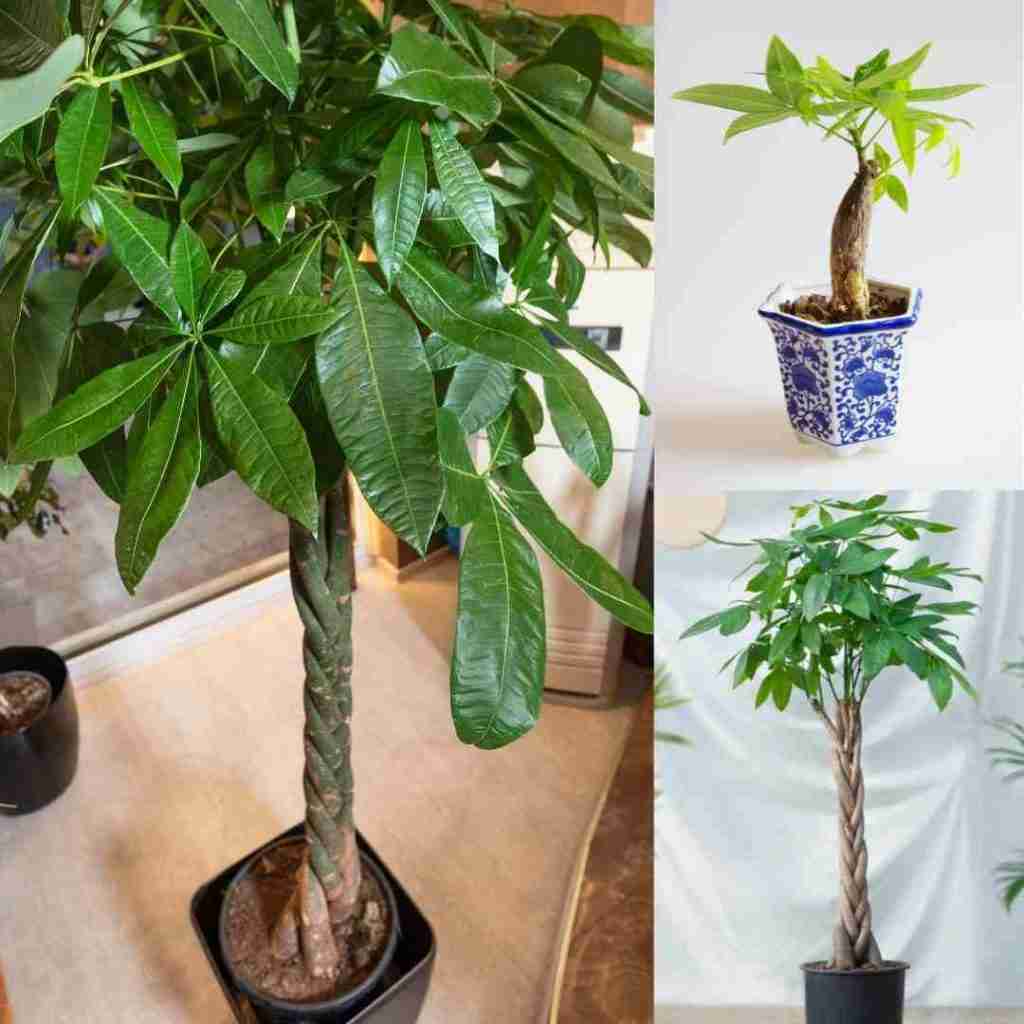
14. Money Tree Plant
A money plant is not what you may think… wouldn’t be great if it grew money! This tropical plant is so easy to grow. My son has had a Chinese money tree for years without much care. You can buy these stunning plants in small and large sizes- each making its own statement.
Popular for its use in Feng Shui, the Money Tree is a pet-friendly and is known to be a great air-purifying plant. It’s large star-shaped leaves and a braided trunk to give your home a tropical feel.
Water: Money Trees are happy with infrequent soaked watering. Water your tree the top 50%-75% of the soil is dry. Make sure you have a proper drainage hole in your pot so the water can drain properly.
Light: Position your Money Tree in medium to bright indirect light, turning it every time you water it for even growth. The tree will always grow towards the light.

15. Rubber Tree Plant
The rubber plant, also known as ficus elastica, is one of those characters that really does fit in anywhere. This gorgeous plant is another tropical beauty! It’s a good look for any coastal home.
This is another healthy plant as the rubber plant is the best at removing toxic gases in the home, particularly formaldehyde: a chemical that occurs in virtually every indoor space. As you can see, the rubber plant fits into every home.
Water: The rubber tree plant requires the right balance of water. During the growing season, it needs to be kept moist and watered at least once a week. It is also a good idea to wipe off the leaves of your rubber tree houseplant with a damp cloth or spritz them with water.
Light : An indoor rubber tree needs bright light but prefers indirect light that isn’t too hot. Consider placing it near a window that has sheer curtains. This allows plenty of light, but hopefully not too much heat.
If you are a plant lover. Check out this post for the top 16 stunning shade garden perennials here. If you are looking for some inspiration to create an outdoor oasis, see here. Learn more about adding a winding garden path made from sustainable crushed oyster shell. here.
Using colors that are found in the local flora can create a sense of unity between the built environment and the natural landscape. This approach can make a structure feel more integrated and less intrusive.
By choosing paint colors that mimic the hues of the surrounding vegetation, buildings can appear to “blend in” with their environment. This can be particularly useful in areas with lush plant life or in rural settings.
Many people find that colors inspired by nature are inherently soothing and attractive. This is why timeless exterior paint colors are often inspired by nature. Green, for example, is often associated with growth and tranquility, making it a popular choice for exterior elements.




